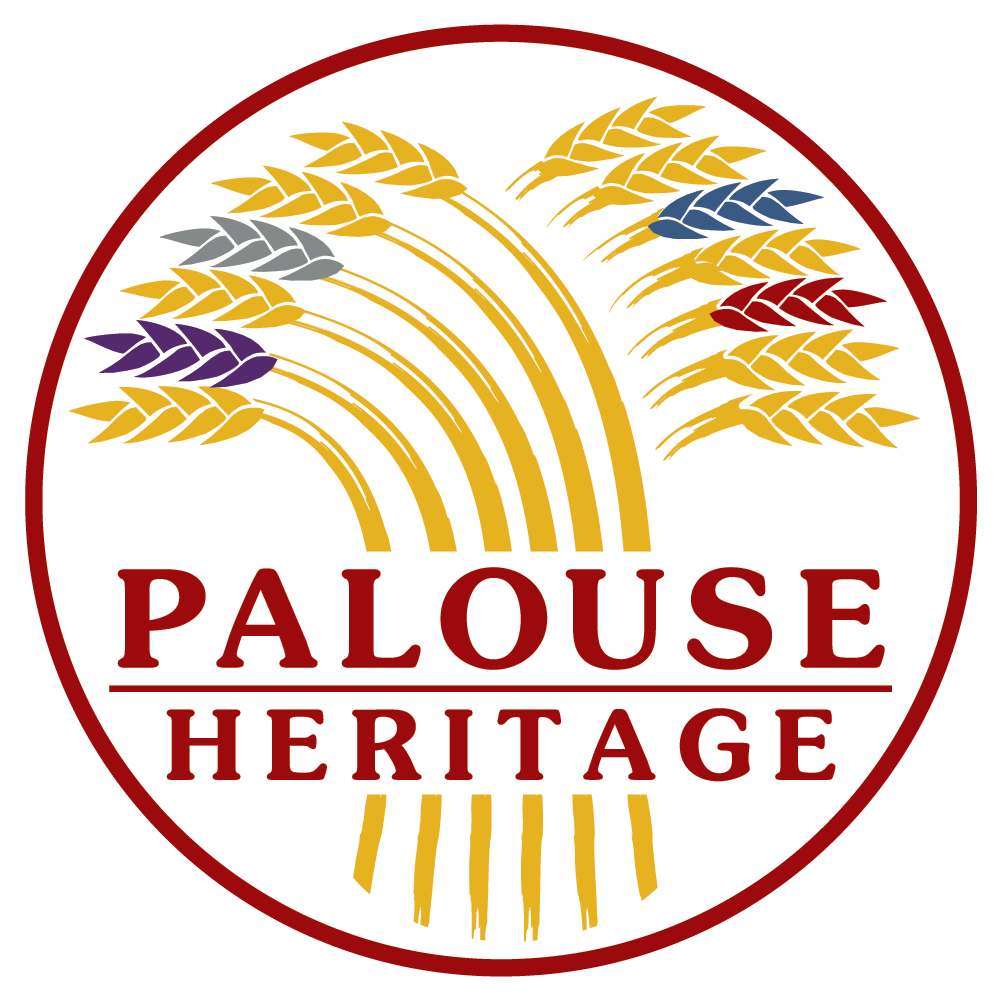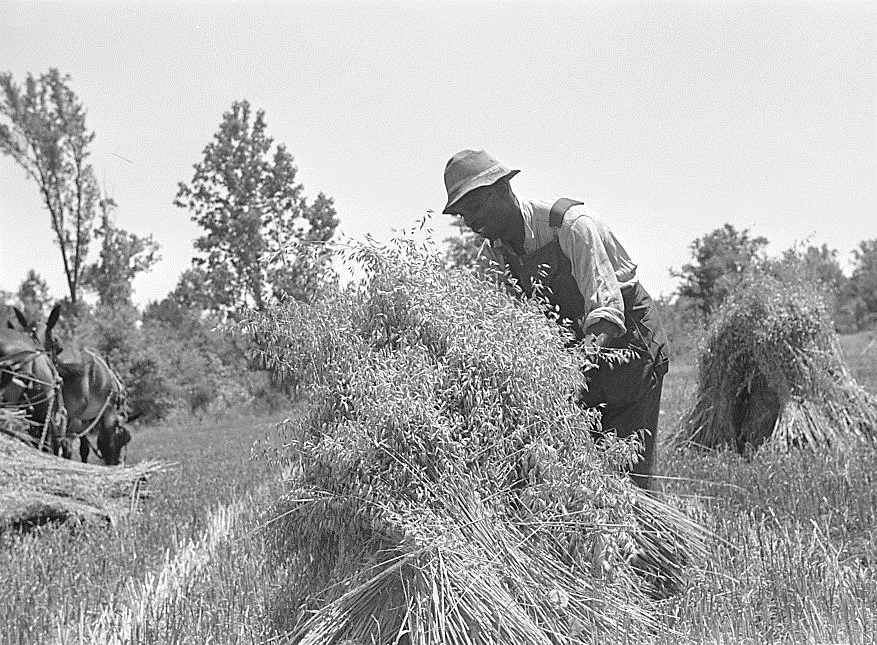Wheat Field—Ecclesiastes: New Deal Farm Security Administration Harvest Photos and Art
A remarkable team of photographers were associated with the Department of Agriculture’s WPA-era Farm Security Administration (FSA) from 1935 to 1943 including Arthur Rothstein, Marion Post Wolcott, Ben Shahn, Russell Lee, and Marjory Collins. Although they had little background in farming, these individuals immersed themselves in the realities of Depression era farming to create some of the nation’s most iconic images of the time. The group worked under the direction of FSA Historical Section director Roy Stryker to formulate a vernacular realism of images and articles that honored rural traditions. Rothstein (1915-1985) found it useful to overcome the suspicions of country folk by conspicuously carrying his Leica camera for several days when visiting with residents on a new assignment without actually taking any pictures. Eventually his subjects felt accustomed to his presence and would even ask to have their pictures taken in formal settings and for what Rothstein sought as “unobtrusive camera” shots: “the idea of becoming a part of the environment… to such an extent that they’re not even aware that pictures are being taken.” While visiting harvest fields in North Dakota, Montana, and Washington, Rothstein gained special appreciation for the significance of small details and came to understand with his colleagues that their mission was not photojournalism, but “photography as fine art” depicting “man in relationship to the environment.”
Marion Post Wolcott, Harvesting Oats on Flint River Farm, Georgia (1939); Black and white film nitrate negative, 35 mm; Farm Security Administration Collection, Prints and Photographs Division, Library of Congress
Russell Lee (1903-1986) was especially sympathetic to the rural poor and traveled widely in the Pacific Northwest and upper Midwest in the spirit of his unpublished “Hired Man” project. Lee sought to document the essential if substantially neglected public depiction of hired farm hands and transient “tramp” laborers, also derisively called “hobos” and “bums,” who traveled the countryside to find work during the harvest season. The collaborative efforts of FSA photographers contributed to widespread public support for New Deal rural improvement programs as images of austere farm homes, windswept fields, and beleaguered harvest workers were featured at public exhibitions and filled the pages of the nation’s leading newspapers and periodicals. As her FSA colleagues worked extensively in the Midwest and South, Marion Post Wolcott (1910-1990) documented rural experience of the era from New England to the Southern states. Her stirring images also express the administration’s social consciousness and the presence of a woman sometimes provided them access to persons and situations that excluded other outsiders.
Ben Shahn, Harvest Dinner (1938); Black and white nitrate film negatives, 35 mm; Farm Security Administration Collection, Prints and Photographs Division, Library of Congress
Lithuanian-born Ben Shahn (1898-1969) was already an accomplished National Academy of Design artist and printmaker in Manhattan when also hired in 1935 as one of the first FSA photographers. He used his pictures not only to advance the agency’s moral mission to inform the wider population to support rural economic and social reform, but also as models for various forms of agrarian art including many harvest paintings and lithographs including Bountiful Harvest (1944), Beatitudes (1952), and Wheat Field—Ecclesiastes (1967). The latter is a watercolor of several dozen black stalks of wheat highlighted by swaths of bright colors in areas where the stems cross. It was also used for Shahn’s illustration of the third chapter of Ecclesiastes (“To everything there is a season….”) in a collection of photo-lithographs rendered with handwritten and illuminated text by the artist for Ecclesiastes Or, The Preacher (Paris: The Trianon Press, 1967). In the book’s preface, Shahn attributes the origin of his artistic commitment to Old Testament references by family and community elders in his Jewish hometown and a particular verse from Solomon’s ancient book: “Wherefore I perceive that there is nothing better, than that a man should rejoice in his own works; for that is his portion….” (Ecclesiastes 3:22).
Shahn’s remarkable series of Ohio grain harvest photographs taken in August, 1938, on the Virgil and Cora Thaxton farm near Mechanicsburg consisted of over 200 images with many that feature women preparing and serving meals to famished harvesters. The artist’s notebooks include details on his hosts’ Depression era economic plight known to many tenant farmers who struggled with low crop shares to make ends meet:
Virgil Thaxton rents a 120-acre farm… [which] is the fourth farm he has rented within the last eight years. At each change he hopes to make enough to have a nice home for his family. Within the last eight years hogs have not brought more than ten cents on the foot. Wheat brought sixty cents per bushel this year. Mr. Thaxton is constantly agitated. He is conscious of the rundown condition of his farm. He would like to have it look as neat as Mr. Brand's own farm. In his agitation he is constantly pulling up a weed here, a weed there, but must then break off to tend the stock. Mr. Thaxton votes for Roosevelt…. Mr. Thaxton loves the land. Two years ago he was offered a small political job in the city. Mr. Thaxton: “But when I thought of the young wheat coming up and that pretty green on top of the hill and it is pretty I just wouldn't think of it. And then the children…. I hear wheat is bringing sixty cents now. If it only brought a few cents more I could afford to fix up this place. As it is, what with giving Mr. Brand his half, we can just get by.”
Ben Shahn, Wheat Field—Ecclesiastes (1967); Ecclesiastes Or, The Preacher (Paris, 1967)
Shahn’s vernacular visuals provide an intimate look at domestic farm life as if Shahn and his camera are invisible observers inside the home. The midday meal was one of the most harried times for the apron-clad women who are shown cooking and serving, while men and boys dressed in overalls sit almost reverentially to partake of the abundant provisions and break from harvest labors. Shahn’s interior views show a sparsely decorated but comfortable home with paper calendar and mercury thermometer above a substantial wooden sideboard laden with meat, potatoes, bread, cake, and other fare. Another view shows a large framed picture on the wall of Christ holding a child, as if both are looking down at a boy—the Thaxton’s son, Harold, seated beneath them. Two tables covered with white fabric tablecloths are splendidly set with silverware, patterned china and Depression glass serving bowls, pitchers, plates, salt and pepper shakers, and wine glasses that probably hold a dessert. The workers eat quietly and drink coffee as if grateful for the bounty and mindful of the long hours of hot afternoon labor that await them.







